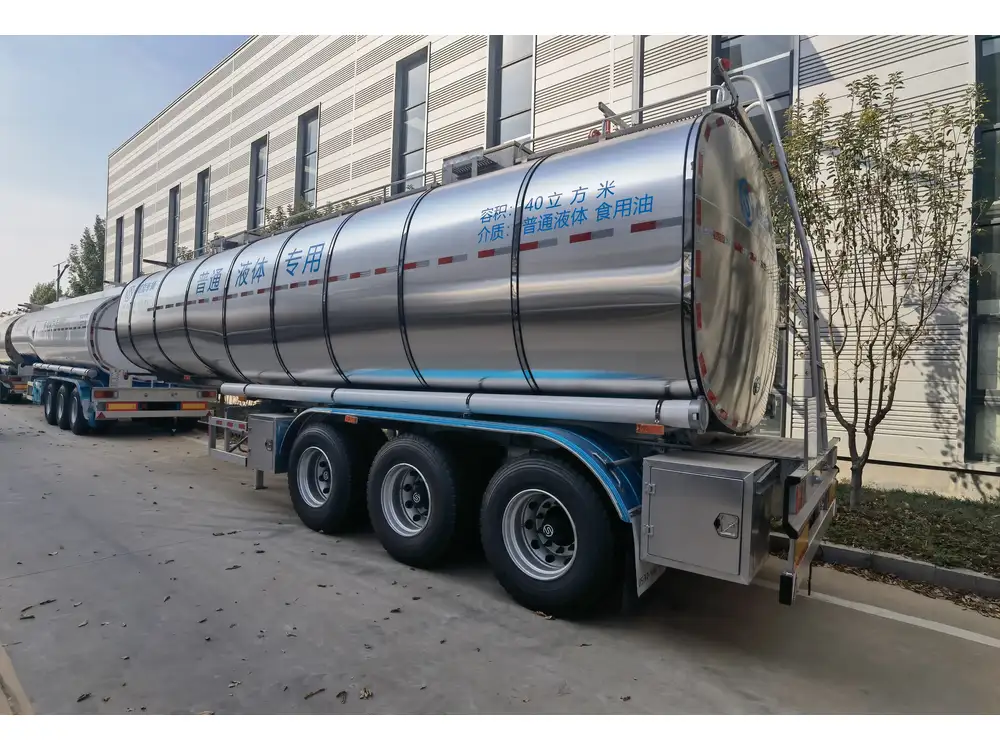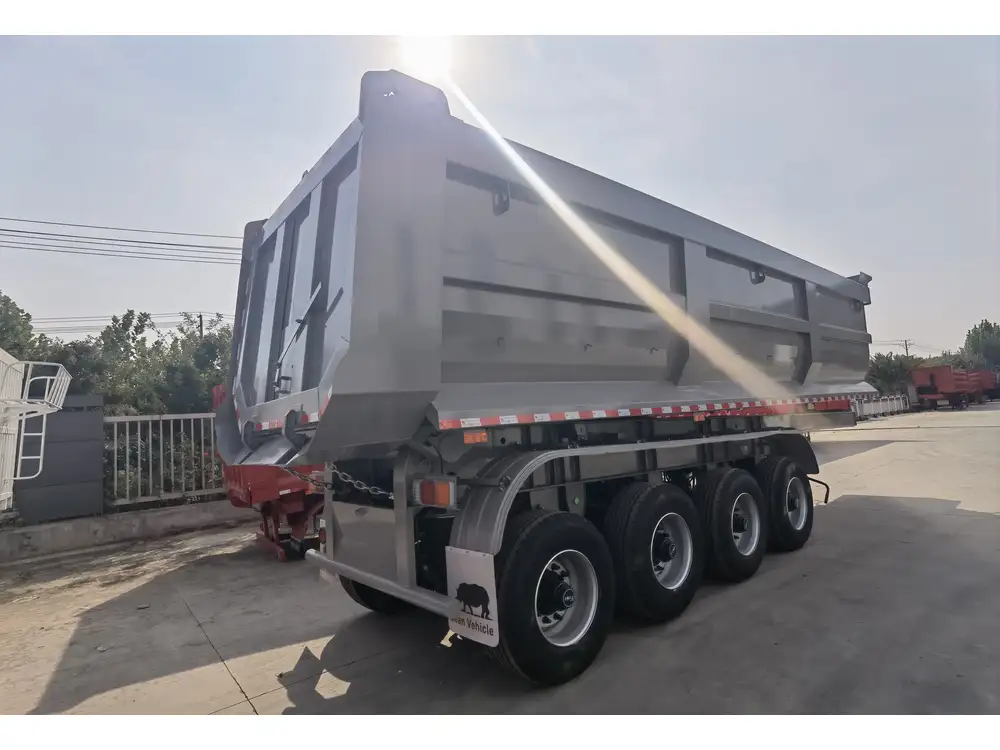The semi-trailer, an essential piece of equipment in the transportation and logistics sector, is pivotal for efficient cargo movement. Understanding how to open a semi-trailer correctly is crucial for operators, ensuring load safety, facilitating smooth operations, and maintaining equipment integrity. Here, we delve deep into the intricacies of opening a semi-trailer, offering a detailed guide into the process, along with best practices and critical insights to enhance your operational efficacy.
Understanding the Components of a Semi-Trailer
Before diving into the opening process, it’s beneficial to familiarize yourself with the basic components of a semi-trailer:
| Component | Function |
|---|---|
| Trailer Door | Provides access to the cargo area. |
| Locking Mechanism | Secures the trailer door to prevent unauthorized access. |
| Hinges | Allow the door to pivot open smoothly. |
| Seals | Help maintain the integrity of the enclosed space, safeguarding cargo from environmental elements. |
| Safety Straps | Additional security feature to secure the doors when closed. |
The Step-by-Step Process of Opening a Semi-Trailer

1. Preparing for the Opening
The initial phase involves ensuring the area around the semi-trailer is safe and clear. Conduct a quick survey to identify potential hazards—loose cargo, uneven ground, and other obstacles.
Equipment Checklist:
- Safety gloves
- A step stool (for higher trailers)
- Torque wrench (if necessary)
- Flashlight (for low-light conditions)
2. Inspect the Locking Mechanism
Each semi-trailer may have a different locking mechanism. Inspect the locking system for integrity and functionality. Common types include:
- Slam Locks: Designed for quick openings, simply push the handle to unlock.
- Rotating Locks: Often require a turn to disengage.
- Key Locks: May necessitate a key for access; ensure you have the key on hand.
Before proceeding to unlock the trailer door, make sure that the system is functioning correctly. If it appears rusted or difficult to operate, lubrication might be necessary.

3. Unlocking the Semi-Trailer Door
Procedure:
- Approach the lock mechanism confidently.
- For slam locks, push down the handle.
- For rotating locks, grasp the handle and turn clockwise.
- For key locks, insert the key, turn gently, and pull the handle.
In case of difficulty with the lock, refrain from applying excessive force as it could cause damage. Instead, investigate the underlying issue, which could be dirt or corrosion.
4. Opening the Trailer Door
Once unlocked, grasp the trailer door handle and pull it gently towards you. Here’s a breakdown based on the type of door:
- Swing Doors: These typically open like traditional doors. Ensure there is enough space to swing fully and securely. Ensure that safety straps are disengaged.
- Roll-Up Doors: Grasp the bottom edge and pull downwards, allowing the door to roll up with ease.
Note: Ensure that the trailer is on level ground before attempting to open the door, as this prevents potential accidents.

5. Securing the Door
After opening the trailer door, it’s vital to secure it to prevent unexpected closure:
- For swing doors, deploy the door hold-back straps or pins.
- For roll-up doors, make sure the door lock mechanism is engaged to keep it upright.
6. Inspecting the Cargo Area
With the door fully open, take a moment to inspect the cargo area before loading or unloading goods. Look for:
- Damage: Check for any signs of damage or wear which could affect the integrity of the trailer.
- Cleanliness: A clean environment is crucial for sensitive cargo, eliminating any health hazards.
- Stability: Ensure all cargo is stable and positioned correctly before any loading or unloading procedures.
7. Closing the Trailer Door
When finished, properly reset the trailer for closure:

Closing Procedure:
- Swing Doors: Align the door with the frame and gently pull it closed. Ensure that it is flush against the frame and proceed to lock.
- Roll-Up Doors: Pull downwards until the door reaches the bottom, verifying that it is fully seated in the locking mechanism.
8. Locking the Trailer Door
Once the trailer door is closed, the final step involves securing it:
- Engage the locking mechanism, following the same procedures mentioned in section 3.
- Perform a final visual inspection to confirm that the locking mechanism is fully engaged and that no gaps are visible.
Troubleshooting Common Problems
Despite following the steps meticulously, you may encounter issues. Here’s an overview of common problems and solutions:
| Problem | Solution |
|---|---|
| Lock Sticking | Utilize a penetrating lubricant and work the mechanism gently. |
| Door Misalignment | Check for obstructions in the hinges, adjust the physical alignment of the door as needed. |
| Seals Damaged | Inspect and replace seals to maintain trailer integrity. |
| Heavy Loads Backing Up | Ensure the trailer is adequately balanced; redistribute cargo if necessary. |

Safety Measures and Best Practices
Pre-Operational Safety Checks
- Ensure all operators are trained.
- Always wear personal protective equipment (PPE).
- Keep clear communication with ground crew when operating near others.
Regular Maintenance
Establish a regular maintenance schedule for your semi-trailers to:
- Ensure locking mechanisms are fully operational.
- Clean all components to prevent rust and damage.
- Regularly examine seals for keeping trailer conditions optimal.

Understand Load Limits
It’s crucial to know and abide by the specified load capacity of your semi-trailer. Overloading can lead to:
- Damage to the trailer.
- Compromised safety.
- Legal ramifications.
Conclusion
Opening a semi-trailer may seem straightforward, but a solid understanding of the procedure, along with attention to detail and safety practices, ensures optimal performance and longevity of the equipment. By following the detailed guidelines provided, operators will not only open semi-trailers effectively but also improve their overall operational efficiency and safety standards.
Whether you are an experienced technician or a novice operator, adhering to these guidelines will undoubtedly enhance your familiarity with trailer operations, ensuring you are well-equipped to handle the demands of this vital industry with confidence and proficiency.



